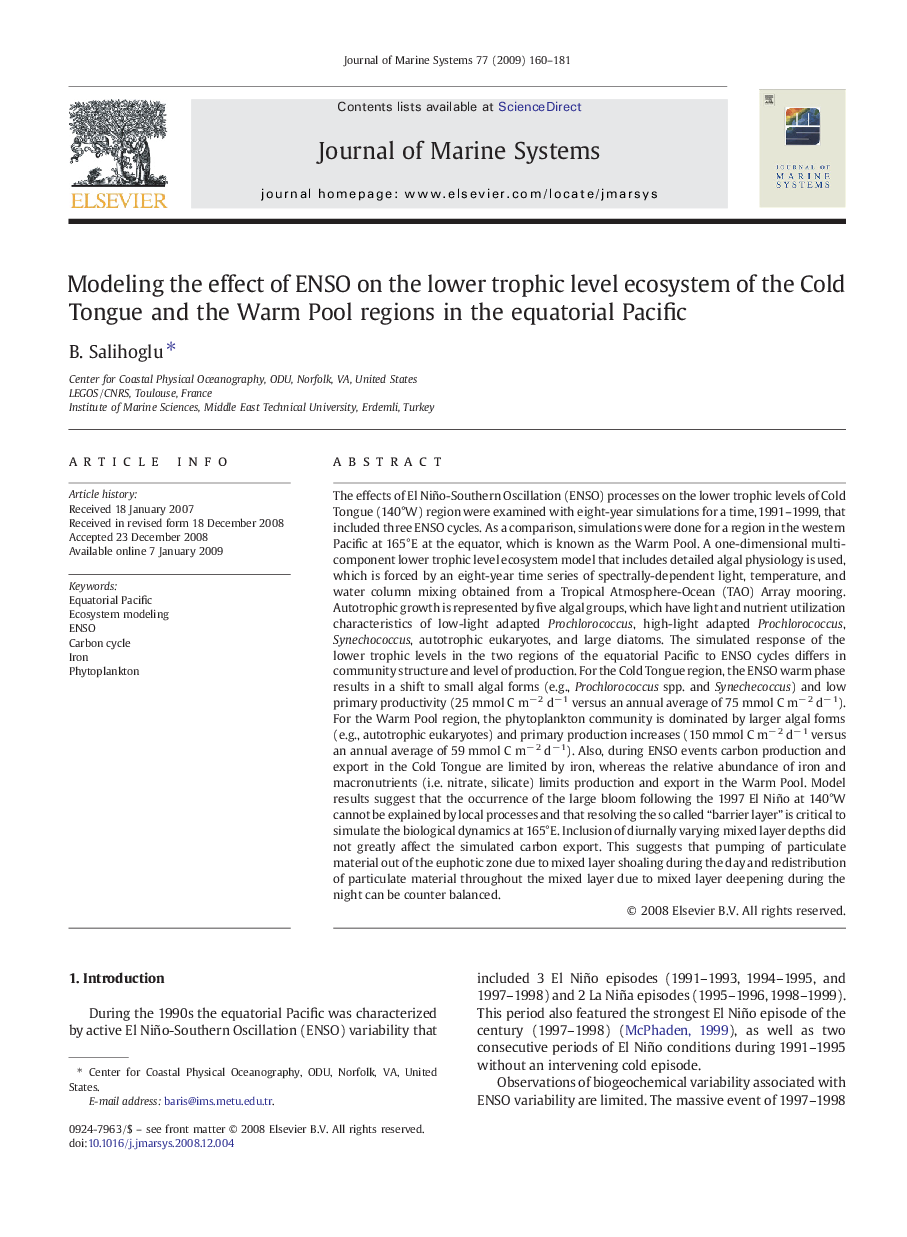| Article ID | Journal | Published Year | Pages | File Type |
|---|---|---|---|---|
| 4549049 | Journal of Marine Systems | 2009 | 22 Pages |
Abstract
The effects of El Niño-Southern Oscillation (ENSO) processes on the lower trophic levels of Cold Tongue (140°W) region were examined with eight-year simulations for a time, 1991-1999, that included three ENSO cycles. As a comparison, simulations were done for a region in the western Pacific at 165°E at the equator, which is known as the Warm Pool. A one-dimensional multi-component lower trophic level ecosystem model that includes detailed algal physiology is used, which is forced by an eight-year time series of spectrally-dependent light, temperature, and water column mixing obtained from a Tropical Atmosphere-Ocean (TAO) Array mooring. Autotrophic growth is represented by five algal groups, which have light and nutrient utilization characteristics of low-light adapted Prochlorococcus, high-light adapted Prochlorococcus, Synechococcus, autotrophic eukaryotes, and large diatoms. The simulated response of the lower trophic levels in the two regions of the equatorial Pacific to ENSO cycles differs in community structure and level of production. For the Cold Tongue region, the ENSO warm phase results in a shift to small algal forms (e.g., Prochlorococcus spp. and Synechecoccus) and low primary productivity (25 mmol C mâ 2 dâ 1 versus an annual average of 75 mmol C mâ 2 dâ 1). For the Warm Pool region, the phytoplankton community is dominated by larger algal forms (e.g., autotrophic eukaryotes) and primary production increases (150 mmol C mâ 2 dâ 1 versus an annual average of 59 mmol C mâ 2 dâ 1). Also, during ENSO events carbon production and export in the Cold Tongue are limited by iron, whereas the relative abundance of iron and macronutrients (i.e. nitrate, silicate) limits production and export in the Warm Pool. Model results suggest that the occurrence of the large bloom following the 1997 El Niño at 140°W cannot be explained by local processes and that resolving the so called “barrier layer” is critical to simulate the biological dynamics at 165°E. Inclusion of diurnally varying mixed layer depths did not greatly affect the simulated carbon export. This suggests that pumping of particulate material out of the euphotic zone due to mixed layer shoaling during the day and redistribution of particulate material throughout the mixed layer due to mixed layer deepening during the night can be counter balanced.
Related Topics
Physical Sciences and Engineering
Earth and Planetary Sciences
Oceanography
Authors
B. Salihoglu,
